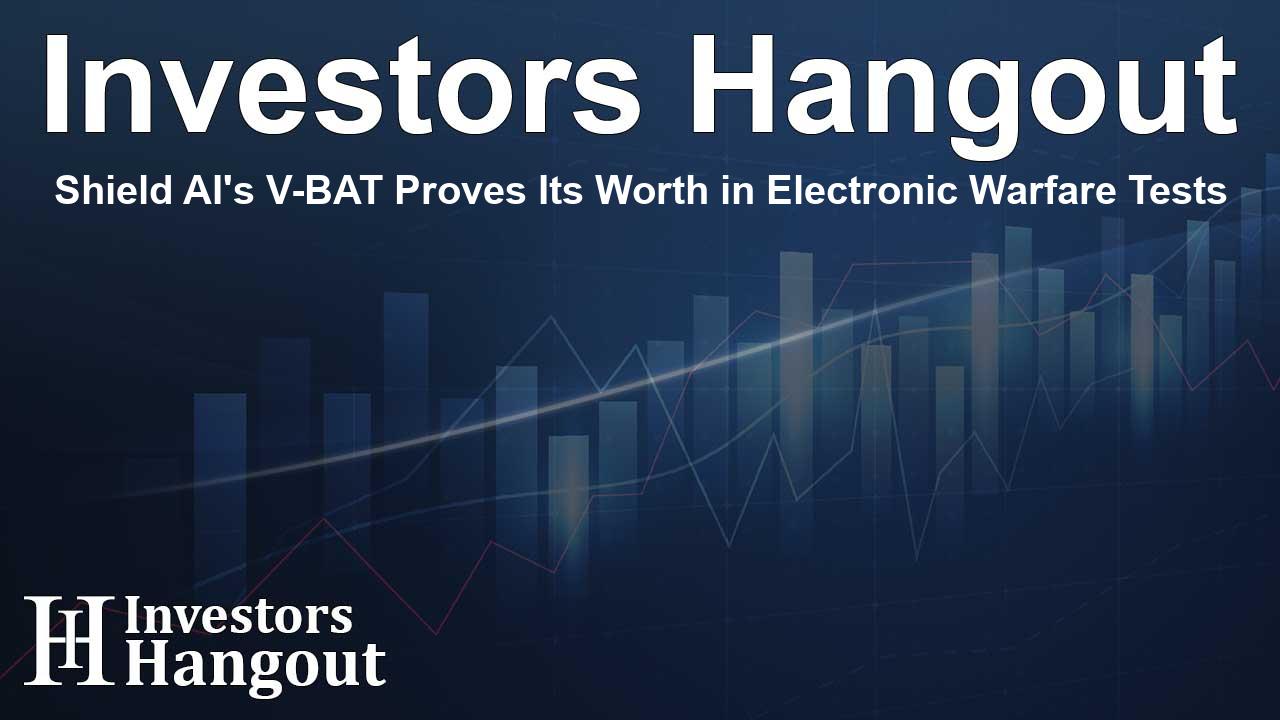Shield AI's V-BAT Proves Its Worth in Electronic Warfare Tests

Shield AI Showcases V-BAT's Advanced Capabilities
At the forefront of technological innovation in military defense, Shield AI's V-BAT has significantly demonstrated its resilience to electronic warfare challenges. This remarkable achievement was showcased at Project Convergence Capstone 5, a notable event that amalgamated Joint and multinational forces for extensive testing.
Overview of Project Convergence Capstone 5
Project Convergence Capstone 5, often abbreviated as PC-C5, serves as a pivotal experiment aimed at advancing collaboration among the U.S. military and its allied forces. The event engaged various branches of the armed forces, focusing particularly on interoperability and enhancing the operational capability of modern warfare strategies.
V-BAT’s Role in the Exercise
During this collaborative experiment, V-BAT operated diligently as part of the 82nd Airborne Division. This unique unmanned aircraft is designed for multi-mission operations, making it an ideal candidate for testing under strenuous conditions. Its participation in "The Box," a specifically challenging training area, allowed it to face realistic electronic warfare scenarios effectively.
Technology Behind V-BAT
The V-BAT is equipped with cutting-edge technology aimed at ensuring its resilience in electronic warfare conditions. With its vertical takeoff and landing (VTOL) capabilities, V-BAT is not only versatile but also adaptable to various mission requirements. This technology is crucial in environmental contexts where traditional aircraft may face limitations.
Benefits of Advanced UAV Systems
The showcased capabilities of V-BAT underline the advantages of advanced unmanned aerial vehicle (UAV) systems in modern warfare. These benefits include enhanced situational awareness, reduced risk to personnel, and the ability to operate in contested environments without direct human involvement. This technology signifies a move towards a more automated future in defense strategies.
Integrating V-BAT into Future Missions
As military operations increasingly rely on UAVs, the V-BAT stands out for its capability to undertake vital missions while evading electronic threats. Its performance at PC-C5 sets the stage for further integration into strategic operations, showcasing a step forward in adapting to the evolving nature of battlefields.
The Future of Drone Technology in Defense
Shield AI's impressive demonstration with V-BAT at Project Convergence Capstone 5 has raised expectations regarding the potential roles of drones in military applications. As advancements continue, the focus will be on enhancing efficacy while ensuring that these systems can operate in high-stakes environments amidst electronic warfare threats.
V-BAT’s Impact on Defense Strategies
The successful performance of V-BAT not only highlights its technical prowess but also emphasizes the shift in defense strategies. As traditional methodologies evolve, incorporating machinery that can withstand electronic warfare will be vital in maintaining tactical advantages.
Looking Ahead: V-BAT's Role in Modern Warfare
With the groundwork laid during Project Convergence Capstone 5, V-BAT's potential is clearer than ever. Future implementations of such technology could redefine military operations, making them more efficient and resilient against a range of adversities.
Frequently Asked Questions
What is Shield AI's V-BAT?
V-BAT is an unmanned aerial vehicle designed for various military missions, including electronic warfare tasks.
What was Project Convergence Capstone 5?
It was a military experiment focused on interoperability among Joint and multinational forces, testing advanced technologies in realistic scenarios.
How does V-BAT operate in challenging environments?
V-BAT utilizes advanced technology to withstand and evade electronic warfare threats, ensuring mission success in contested areas.
What advantages do UAVs like V-BAT provide?
UAVs reduce risks to personnel, offer enhanced situational awareness, and ensure operational capabilities in challenging scenarios.
What does the future hold for drone technology in defense?
The integration of advanced UAVs like V-BAT signifies a shift towards more automated and resilient defense strategies in modern warfare.
About The Author
Contact Thomas Cooper privately here. Or send an email with ATTN: Thomas Cooper as the subject to contact@investorshangout.com.
About Investors Hangout
Investors Hangout is a leading online stock forum for financial discussion and learning, offering a wide range of free tools and resources. It draws in traders of all levels, who exchange market knowledge, investigate trading tactics, and keep an eye on industry developments in real time. Featuring financial articles, stock message boards, quotes, charts, company profiles, and live news updates. Through cooperative learning and a wealth of informational resources, it helps users from novices creating their first portfolios to experts honing their techniques. Join Investors Hangout today: https://investorshangout.com/
The content of this article is based on factual, publicly available information and does not represent legal, financial, or investment advice. Investors Hangout does not offer financial advice, and the author is not a licensed financial advisor. Consult a qualified advisor before making any financial or investment decisions based on this article. This article should not be considered advice to purchase, sell, or hold any securities or other investments. If any of the material provided here is inaccurate, please contact us for corrections.
